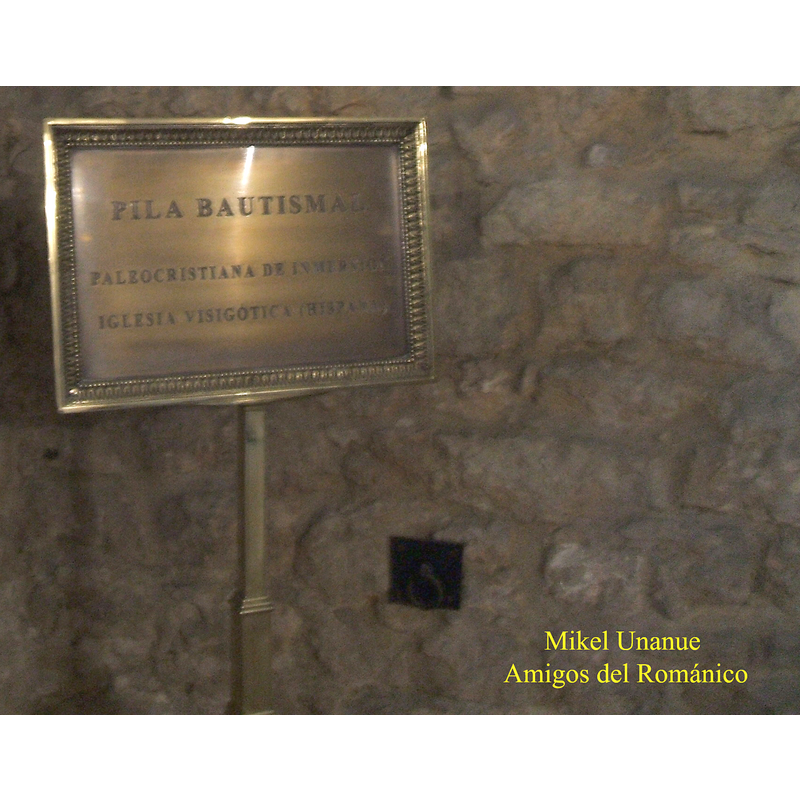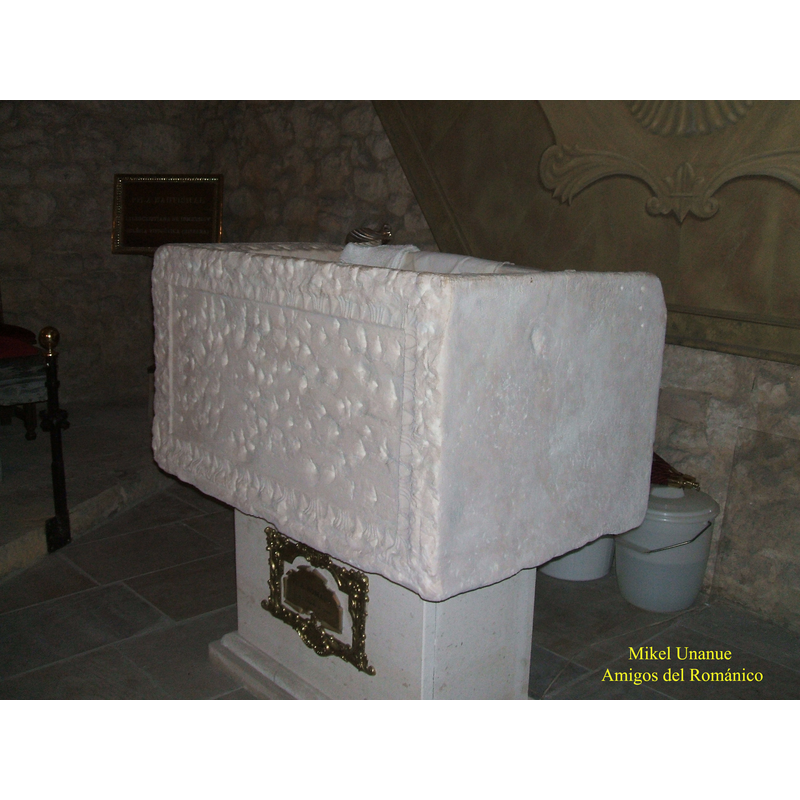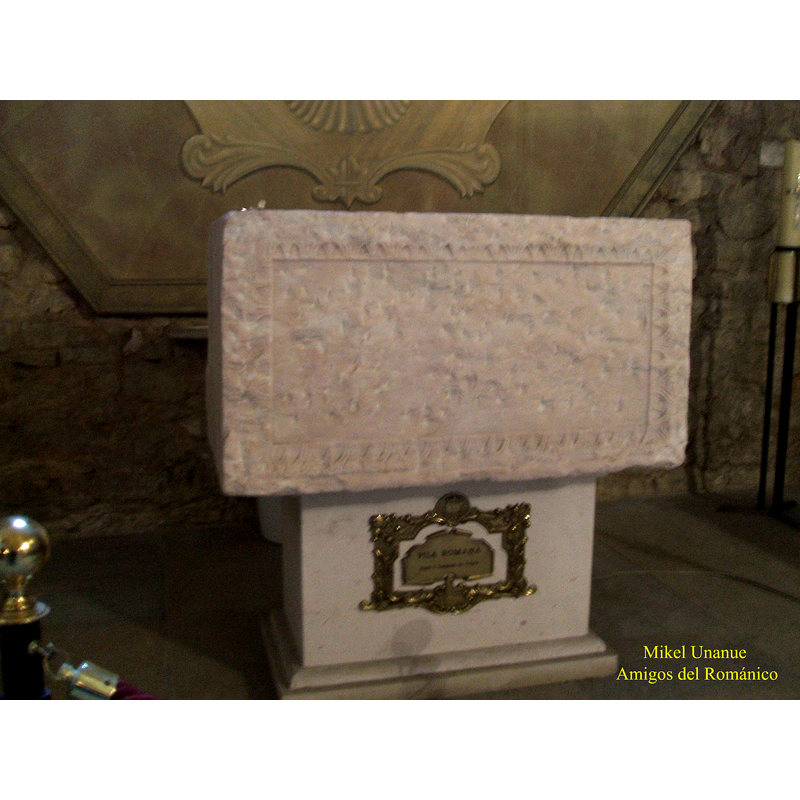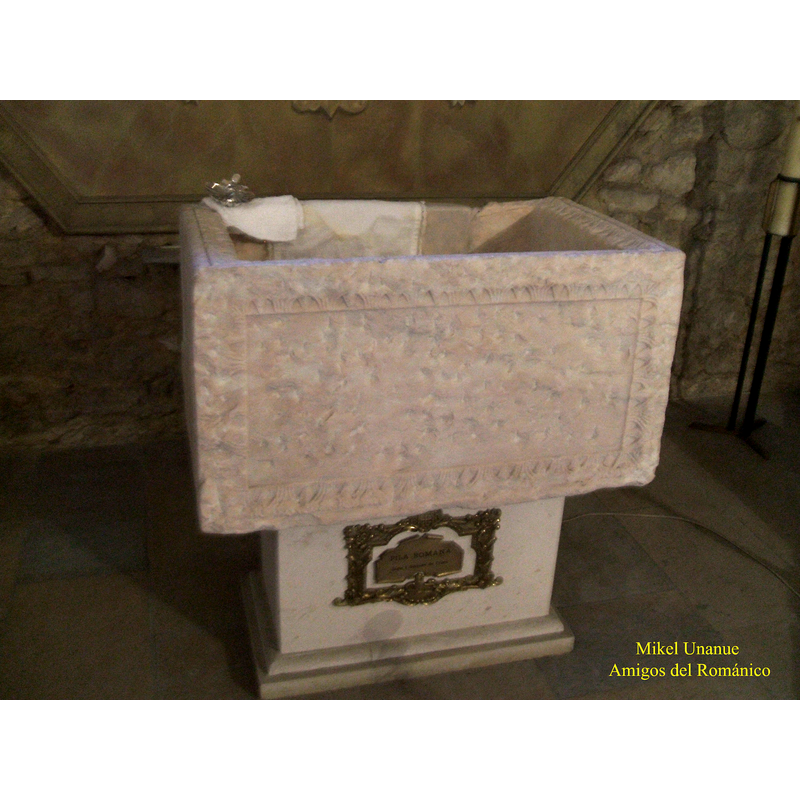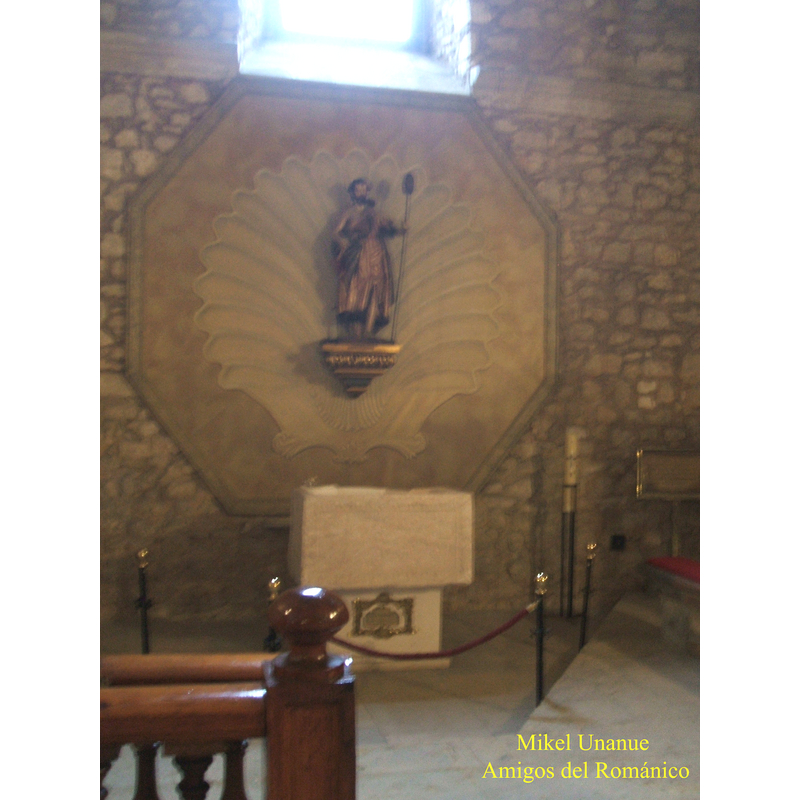Oviedo
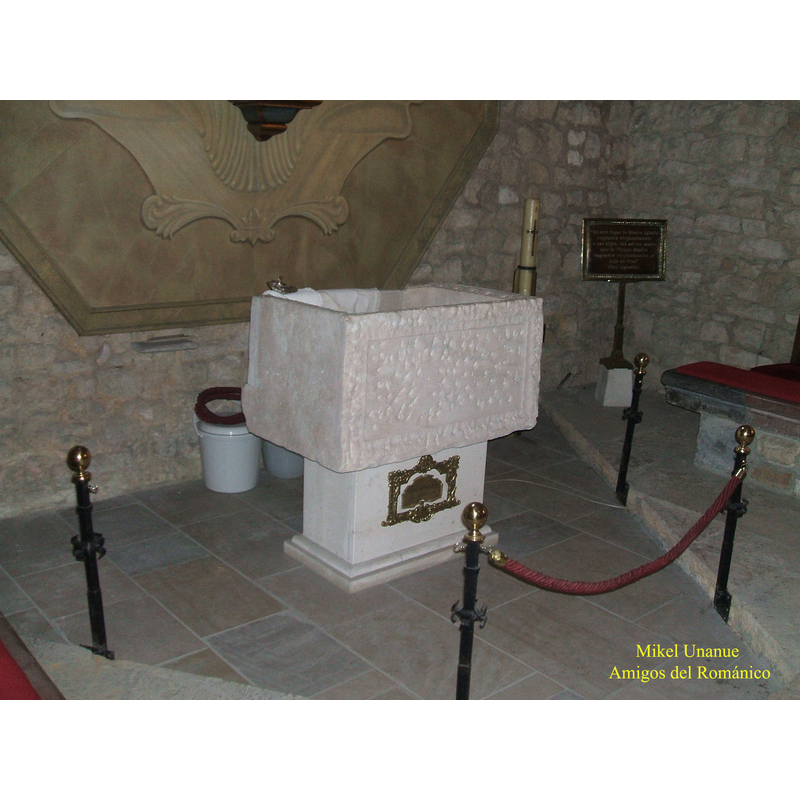
Image copyright © Mikel Unanue, 2009
Standing permission
Results: 8 records
B01: design element - patterns - floral
R01: design element - motifs - floral
information
view of basin
view of font
view of font
view of font in context
INFORMATION
FontID: 07336COR
Object Type: Baptismal Font1
Church/Chapel: Parroquia de Santa María la Real de la Corte [aka San Vicente]
Church Patron Saints: St. Mary the Virgin
Country Name: Spain
Location: Asturias, Principado de Asturias
Directions to Site: Located in Oviedo capital
Historical Region: Oviedo
Font Location in Church: Inside the church, in the presbitery annex
Century and Period: 1st century? / 4th - 5th century? [re-cycled?], Hispano-Roman? / Visigothic?
Credit and Acknowledgements: We are grateful to Mikel Unanue for his photographs of this font
Church Notes: The church was originally the temple of a Benedictine convent, turned into parish church in the 19th century
Font Notes:
Click to view
A discovery in 1968, in a back wall of the presbitery annex in the church of the former Benedictine convent of San Vicente, also known as Santa María la Real de la Corte, in Oviedo capital, brought to the light two baptismal fonts, one inside the other, during the renovation work being done in this church. The then parish priest, don Ramón Iglesias, released the finding in a separata of the Boletín de Estudios Asturianos (BIDEA, 1970: 429-434). There he identifies the two objects: 1)a "conventional" baptismal font of red stone, consisting of a hemispherical basin with a single floral motif and a side drain, and a plain cylindrical pedestal base; the second object, 2)a rectangular box-like font of polished marble, ornamented around the rim with a stylised floral pattern. Further information on this font has been made available by the current parish priest, don Laurentino Gómez Montes in the parish' own website [cf. infra]. He informs that the font was made accessible -as of March 29, 1999, Palm Sunday- and includes the expert opinion of several people on second, the rectangular font. He cites Emilio Olavarri Goicoechea and his idfentification of the ornamental motif as "kymation lesbico", which would date the font to the time of emperor Augustus [† 14 A.D.], and that, lacking a cover, it would not have been a sarcophagus but rather the trough or basin of a fountain ["pila" as well in Spanish], what the Romans called a "carda". Don Laurentino also cites the opinion of Helmunt Schlunk, specialist in the pre-Romanesque art of Asturias and director of the Instituto Arqueológico Alemán of Madrid, who thinks that it is indeed a baptismal font that would have been used in the Visigothic period, 6th or 7th century, although the ornamentation is 4th-century. Regarding the possible origin of the object, don Laurentino cites expert opinion that identifies the pink marble as Portuguese, which would probably located the origin of the font in the town of Mérida, having arrived in Asturias, as did other such materials, in the 4th-5th century. [WEB site: www.terlecable.es/personales/arpucorte/Corte/indexcorte.htm]. [We are grateful to Ana Belén de los Toyos de Castro, of the Biblioteca del Real Instituto de Estudios Asturianos for bringing this font to our attention and for supplying all the documentation on it]
MEDIUM AND MEASUREMENTS
Material: stone, marble (pink - from Portugal)
Font Shape: rectangular (mounted)
Basin Interior Shape: rectangular
Basin Exterior Shape: rectangular
Height of Basin Side: 55 cm
Basin Total Height: 55 cm
Trapezoidal Basin: 63 x 100 cm
Notes on Measurements: Laurentino Gómez Montes [www.terlecable.es/personales/arpucorte/Corte/indexcorte.htm]
![identified as "kymation lesbico" by Emilio Olavarri Goicoechea [cf. Font notes]](/static-50478a99ec6f36a15d6234548c59f63da52304e5/compressed/1100110023_compressed.png)
![[cf. Font notes]](/static-50478a99ec6f36a15d6234548c59f63da52304e5/compressed/1100110022_compressed.png)
